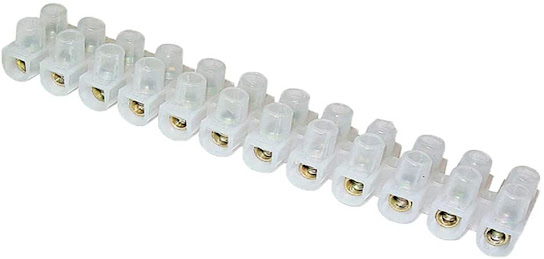In many contexts, a terminal strip is an essential tool in the installation of electrical components. It allows you to organize wiring, ensuring that the panel is electrically and mechanically safe. It is also helpful in the maintenance of machines. They make it easy to detect malfunctions in equipment. These strips also facilitate the measurement of tension, current, and resistance. Here are some benefits of using a terminal strip in your electrical installation. Listed below are some of their key functions.
Common use of a terminal strip:
A common use of a terminal strip is to connect equipment to the central panel. Sometimes, wires must pass through junction boxes before reaching the final destination. This is where the strips come into play. They provide a flexible, reliable, and safe connection method. When you're installing electrical components, remember to always use a junction box to store them. Once you've plugged in your wires, it's time to connect them.
Advantages of common use of a terminal strip:
A terminal block has multiple advantages. Its design makes it easier for you to connect and disconnect wires. A terminal block can be mounted on a PCB or DIN rail, and it can snap into place. Different types of connectors can be mounted on the same rail. A DIN rail, which is common in Germany, is the preferred method for mounting terminal blocks. Generally, the voltage of a terminal block is determined by its dielectric pitch and the strength of the housing.
High-density terminal blocks are designed for OEM purposes. They are hand-marked or custom-printed to aid in identifying individual terminals in a system. Some models also have special features. They can be mounted next to one another. Some models also have an indicator light. It will light up when a current is flowing. A barrier strip has a few screw terminals and is made of metal. If a device detects a current, it is a "barrier block."
Other advantages of a terminal strip:
Another advantage of using a terminal block is that it can be easily removed. This is useful for connecting different circuits. Depending on the application, it can also be categorized into three types based on construction and intended use. Moreover, it can be used for both permanent and semi-permanent connections. Unlike other electrical connectors, these blocks can be easily accessed. They are highly versatile. For example, they can be mounted in vehicles.
A terminal block:
A terminal block is an electrical connector with a plug. These blocks are designed to connect electrical circuits. A screw terminal is an electrical connector with a single core. A stranded wire is called a bi-wire. A bare wire is considered to be a double-strand. The latter is also commonly used. Its size is determined by the type of connector that it is. Most terminal blocks come with an insulated plug.
A terminal block can have one or more levels. A single-level pass-through terminal block connects two wires. The second-level terminal block is a multilevel block. It is used for connecting multiple wires. The third-level terminal block can hold three wires. Both types of connectors are commonly used in different types of applications. A single-level pass-through block has one input and one output contact. A dual-level pass-through terminal block has two levels of connection terminals.
Screw-terminated terminal block:
A screw-terminated terminal block is an electrical connector that can connect two or more wires safely. A single-pole terminal block is used for electrical wires, while a top-hat-type block has twenty-four or more. It is used to connect two wires together. It is a common type of wiring connector. It is also useful in a range of applications, as it can serve as a flexible and convenient connector.
A screw-terminated terminal block is an electrical connector that can be used with a screwdriver. It is easy to install, and provides test points for wiring and electrical outlets. Its copper-alloyed body reduces the chances of corrosion. It also offers more than just one type of connection. A few of the most popular types are listed below: When choosing a terminal block, always choose the right type of wire for the job. It is important to understand what you're connecting to.
Price of a terminal strip:
When using a terminal block, it is important to note that it is generally cheaper than other connectors. It can save you a lot of time and ensure a reliable connection. A multi-level terminal block is also safer than one single-level terminal block. A multi-level block can decrease the panel space by up to 50% and contains multiple levels of circuits. It can be configured with finger-safe connections to ensure safety while working with electricity.



.jpg)

Post a Comment